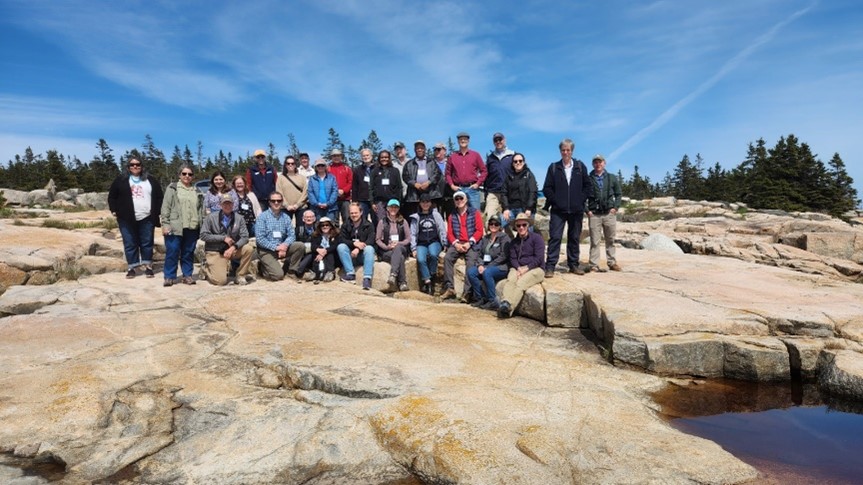Major natural areas receive World Heritage protection, based on IUCN advice
The World Heritage Committee has enlarged natural World Heritage areas by more than 100 million hectares, an area roughly 26 times the size of Switzerland.
The 29% increase in World Heritage areas globally followed advice from IUCN, the International Union for Conservation of Nature, in a major set of new commitments for the conservation of geological heritage and biodiversity under the World Heritage Convention at its current meeting in Riyadh, Saudi Arabia. The World Heritage List now covers 266 sites encompassing 476.8 million hectares, strictly protected for their natural values.
The Committee inscribed twelve new World Heritage sites for their natural values, which were evaluated by IUCN – the official advisor on natural World Heritage.
The Committee followed IUCN’s advice to inscribe the following natural sites:
- Madagascar’s Andrefana Dry Forests as an extension of Tsingy de Bemaraha Strict Nature Reserve to include almost all of Madagascar’s western dry forest centres of endemism
- Ethiopia’s Bale Mountains National Park, which is home to important endemic and endangered species in an intact ecosystem of diverse landscape mosaic
- The Hyrcanian Forests in Iran has been extended to Azerbaijan, adding highly valuable ancient forests straddling the Caspian Sea
- Saudi Arabia’s ‘Uruq Bani Ma’arid, a spectacular hyper-arid desert landscape
- The Cold Winter Deserts of Turan in Kazakhstan, Turkmenistan and Uzbekistan, which exemplify the evolution and adaptation of terrestrial ecosystems to extreme climatic conditions
- Tajikistan’s Tugay forests of the Tigrovaya Balka Nature Reserve contain the largest Tugay forest massif in Central Asia with many threatened species
- Canada’s Anticosti with remarkably complete and intact fossil records showcasing the first recorded mass extinction event in Earth’s history
In addition, the World Heritage Committee followed IUCN’s advice in accepting extensions of boundaries of existing World Heritage sites, including France’s French Austral Lands and Seas, whose marine areas were more than doubled, now covering a significant part of the Indian Ocean.
The countries having proposed further nominated sites followed IUCN’s recommendations for effective conservation, to act positively and quickly, which led to IUCN’s concerns regarding protection and management requirements being addressed. The Committee therefore also inscribed Nyungwe National Park as Rwanda’s first World Heritage site, which has rich biodiversity and home to large populations of globally threatened species in an emblematic Albertine Rift landscape; Congo’s Forest Massif of Odzala-Kokoua, which represents an excellent example of post-glacial forest recolonization of savanna ecosystems contains high biodiversity values; Italy’s Evaporitic Karst and Caves on Northern Apennines represents an extensive gypsum karst terrain containing more than 900 caves; Viet Nam’s Ha Long Bay – Cat Ba Archipelago as an extension to Ha Long Bay demonstrates the earliest stages of sea-inundation process of tropical karst. The Committee also inscribed France’s Volcanoes and Forests of Mount Pelée and the Pitons of Northern Martinique located in the Caribbean for its exceptional volcanological and biodiversity values.
“These new World Heritage sites represent some of the most important sites for nature on Earth,” says Tim Badman, Head of Heritage and Culture at IUCN. “Recognising these exceptional places through the World Heritage Convention emphasises our collective responsibility to protect these areas and commits each site to ensure the highest standards and practices are followed.”
IUCN is the advisory body on natural World Heritage providing technical, independent advice on nominations submitted to the World Heritage Committee, as well as on necessary action to support listed natural sites facing threats.



